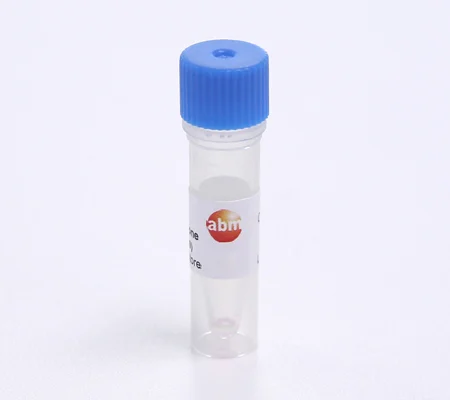
CB-iPSC

| CAT.NO | UNIT |
|---|---|
| T2010 | Vial |
| Description | Cord blood iPSCs induced with non-viral EBNA1-based episomal vector pEV-SFFV-OS. All cell lines are tested to be free of any transgene vector insertion by PCR analysis and thus are authentic footprint-free iPSCs. These lines have all been passaged long-term (up to P30) without differentiation in optimized human iPSC culture media in the presence of inactivated REF or MEF feeder cells. These lines may have greater propensity to differentiate into Hematopoietic Stem Cells (HSCs) or other mesoderm cells due to epigenetic memory. Great cell model systems for any investigative research work including on iPSCs, HSCs, and disease modeling. |
|---|---|
| SKU | T2010 |
| Species | Human (H. sapiens) |
| Tissue/Organ/Organ System | Blood |
| Vector Map | pEV-SFFV-Oct4-2A-Sox2 |
| Caution | For Research Use Only, not for therapeutic or diagnostic purposes. |
| Cell Type | Ready-to-Use Stem Cells |
| Propagation Requirements | The basal medium for this cell line is Prigrow X series medium available at abm, Cat. No. TM2010. Carbon dioxide (CO2): 5%, Temperature:37.0°C. |
| Unit quantity | Vial |
| Passage Number | 10 |
Supporting Protocol
MSDS
QC
Other
How do I culture these cells?
Human iPSCs can be cultured with the Human iPSC Culture Medium Kit (Cat.No.: TM020) together with feeder cells such as MITC Inactivated Rat Embryonic Fibroblast (REF) Feeder Cells (T2017) or MITC Treated Immortalized Mouse Embryonic Fibroblast Feeder Cells (T2009).
How do I ensure the survival of first passage?
To improve survival, it is recommended to use ROCK inhibitor (10uM) and conditioned medium immediately upon thawing. Conditioned medium can be made by adding Human iPSC Culture Medium (TM020) to inactivated MEF (T2009) or REF (T2017) for one day and harvest the supernatant.
How do I ensure survival of first passage?
To improve survival, it is recommended to use ROCK inhibitor (10uM) and conditioned medium upon thawing. Conditioned medium can be prepared by adding the Human iPSC Culture Medium (TM020) to inactivated MEF (T2009) or REF (T2017) for one day and harvest the supernatant.
What is the protocol for thawing and culturing iPSCs?
1) One day before thawing or passaging iPSCs, prepare feeders in 0.1% gelatin-precoated 6-well TC plates (37C for ~1 hour). Seed ~3x10^5 feeder cells per well. 2) Thaw CB-iPSCs by immersing the vial in 37C water bath for 1-2 minutes. Gently pipette 2-3 times and transfer all the cells to a 15 or 50-ml tube with 5-10 ml TM020 medium. 3) Spin down at 200g for 3-5 minutes. Carefully aspirate all the supernatent and resuspend cells in 2 ml TM020 medium. Add Rock inhibitor to increase cell survival. Aspirate MEF medium in the wells with feeder and transfer thawed cells to the feeder for culture. 4) Starting the next day, change 2 ml medium every day or every other day without Rock inhibitor. 1-2 days later, you should be able to see survived small colonies. 5) Every 5-7 days, split iPSCs. Aspirate out medium and add 1 ml 0.5 mM EDTA/PBS. Incubate 3-5 minutes at 37C. When colonies start to curl up, use 1 ml pipettor to gently break down colonies into clumps of 10-50 cells. transfer 10-25% colonies into a new well precoated with feeders. 6) After 1-2 passages on feeder cells, iPSCs can be cultured with Matrigel-precoated 6-wells using TeSR medium.
What is the protocol for freezing iPSCs?
1) 4-5 days after cell split, when iPSCs reach a confluency of 30-60%, aspirate out spend medium and add 1ml 0.5mM EDTA/PBS. Incubate cells at 37C for ~5min. 2) When colonies start to detach, gently harvest all the cells into a 5-ml or 15-ml or 50-ml tube by pippeting 1-2 times. Avoid multiple pippetting. Breaking down clumps into single cells may substantially decrease cell survival. May add iPSC medium to harvest all the cells. 3) Spin down at 200g for 2-3 minutes. 4) Carefully aspirate out supernatent and gently resuspend cells in 0.5ml iPSC medium. 5) Add 0.5ml freezing medium (TM023) and ROCK inhibitor. Mix well by flipping the vial and transfer the medium to a cryovial. 6) Finally transfer the vial to -80C freezer for short-term storage (days to weeks). After cells are frozen, you may then transfer the vial to liquid nitrogen tank for long-term storage (years).
What is the recommended seeding density for iPSC?
IPSCs require seeder cells before thawing and plating the IPSC. Seed ~3x10^5 feeder cells in each well of a 6-well plate. After thawing the iPSCs, put all the cells from the vial into 1 well. After several days, you may start splitting the iPSCs into multiple wells depending on how many cells survived. The density mentioned above is for the seeder cells which should be at 3x10^5. Afterwards, please plate the entire IPSC into one well at 10^6 concentration.
There are no references for this product yet!


